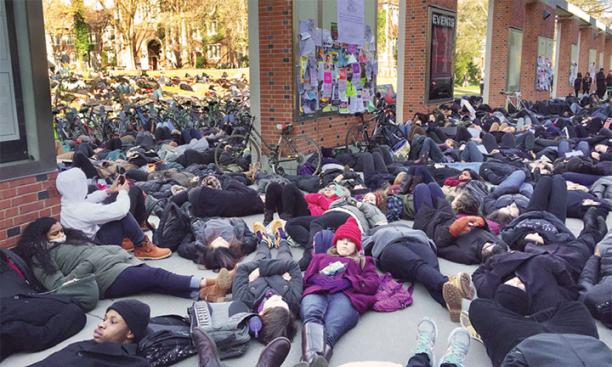
Protests about racial justice have roiled campuses across America this fall, including at Princeton. Many alumni have asked me about the causes for this turmoil.
Media pundits and others often suggest that students today are simply too quick to take offense, and in some cases are taking offense when it is not intended. On occasion students have seemed to demand that they be insulated from any viewpoints or behaviors that make them feel disrespected or unwelcome.
Many find this trend alarming, and for good reason. Freedom of speech is a bedrock value at Princeton and every great university. Teaching, learning, and research depend on the open and honest exchange of ideas.
We expect all interactions on our campus to be guided by principles of civility and mutual respect, but we do students no favor—on the contrary, we do them great harm—if we shield them from all expression that discomfits, angers, or offends them.
While youthful hypersensitivity has been a factor in the protests occurring nationwide, it would be shortsighted to regard it as their primary cause. The current wave of campus activism began with last year’s Black Lives Matter campaign. Since then, the nation has witnessed a profoundly disturbing stream of violence against black people, including several shootings by police and the murder of nine innocent worshippers at a church service in Charleston, South Carolina.

These recent events have heightened student awareness of and anger about longstanding issues of fair treatment and racial injustice. Stereotypes and prejudice remain all too prevalent throughout American society. Research indicates, for example, that unconscious bias affects how employers regard applicants of color. Data show that students from underrepresented groups face social and academic obstacles significantly greater than those confronting comparably qualified white students.
Prejudice sometimes surfaces with disturbing overtness. When students speak up on questions of racial justice, for example, they may find themselves the target of slurs or insults on social media or in person. However, much of the prejudice confronting students of color manifests itself more subtly. It operates through stereotypes (which is why our Pre-read this year was Whistling Vivaldi) and is embedded in cultures. How, our students ask, can they confront this bias?
One way to confront a culture is to contest its symbols. That—not hypersensitivity—is why campus protests have so often centered on issues related to institutional symbols that some students regard as indicators of patterns of bias.
At Princeton, few symbols figure so powerfully as Woodrow Wilson. Our School of Public and International Affairs is named for him, as is one of our residential colleges. He gave Princeton its informal motto, “In the Nation’s Service.” We quote him often at ceremonial gatherings.
Wilson was a remarkable man. In my view, he did more than any other single individual to shape Princeton into the great university it is today. His contributions to world affairs won a Nobel Prize. On the other hand, Wilson was also guilty of great wrongs, including the re-segregation of the federal civil service.
Every human being mixes good and bad, and we would honor no one if we insisted on an unblemished record. Yet, when we recount Wilson’s story at Princeton we have often glossed over his failings.
I told the protestors that I believe we should retain Wilson’s name on both the School of Public and International Affairs and on our residential college. At the same time, I agreed to ask the Board of Trustees to re-examine how Princeton recognizes Wilson’s overall legacy. I did so for three reasons.
The first is simply that as a university we have an obligation to get the history right.
The second is that I trust this community to deliberate thoughtfully and the Board of Trustees to decide wisely. I am confident that Princeton’s review of Wilson’s legacy will illuminate history, not erase it. Interested alumni may participate in the project by going to: wilsonlegacy.princeton.edu.
The third is that our understanding of our past affects how we view the present. To borrow a phrase from my Harvard counterpart and historian Drew Gilpin Faust, “an accurate and just history [can] change the world.” [1] Acknowledging the full import of Wilson’s legacy can help us to recognize more fully who we are today as a University and can enable us to pursue our mission of teaching, research, and service more effectively.
Though I reject some of the tactics and arguments invoked by the protestors to challenge Wilson’s legacy, I believe it is important that we use this opportunity to understand better how our students experience Princeton’s history and culture. All of us have a responsibility to take a careful and informed look at our history, and to find ways to advance our University’s unending quest for fairness and justice. I am persuaded that if we commit ourselves to examining the facts in an open, civil, and transparent fashion, we will make Princeton an even stronger and more inclusive community.
1. Drew Faust, “John Hope Franklin: Race & the Meaning of America,” New York Review of Books 62, no. 20 (December, 2015): 97-99.
